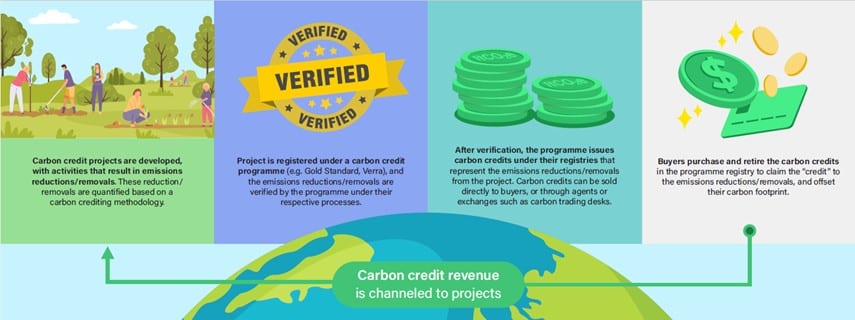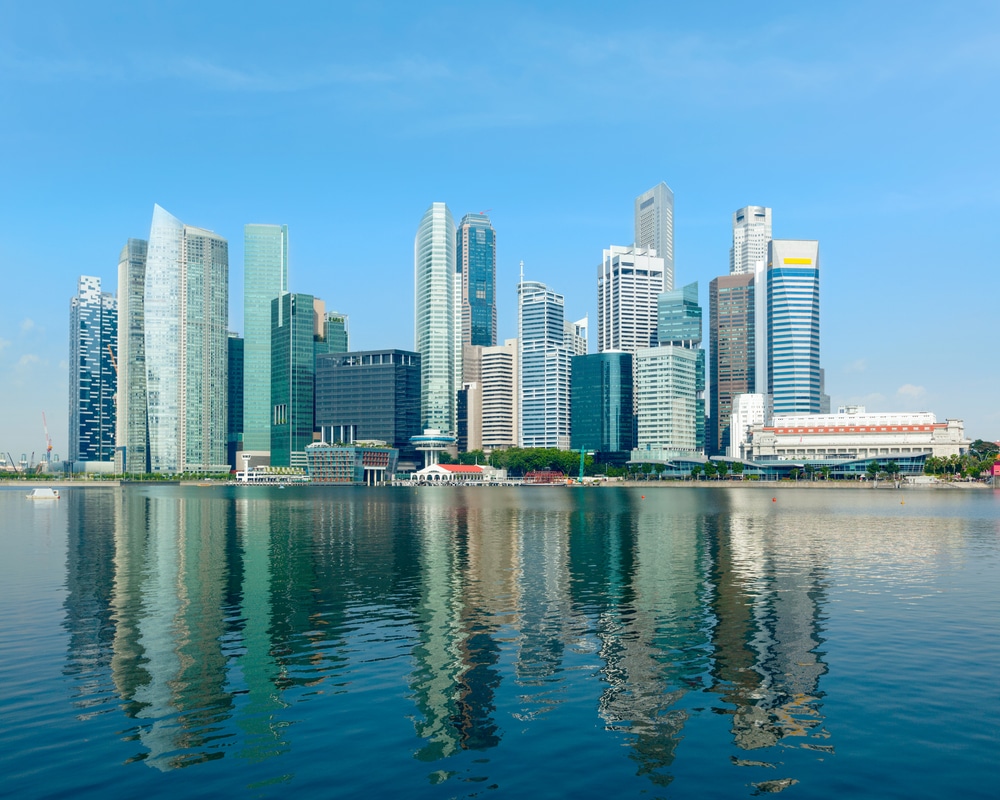Singapore announced a set of criteria for international carbon credits (ICCs) to ensure that they are of high quality which companies can use to offset their taxable emissions.
The Ministry of Sustainability and the Environment (MSE) and the National Environment Agency (NEA) jointly introduced the Eligibility Criteria under the ICC Framework.
The criteria align with the Paris Agreement’s Article 6, allowing Singapore to work with other nations supporting their climate targets. They’re also in line with international standards, such as the Carbon Offsetting and Reduction Scheme for International Aviation (CORSIA).
High-quality international carbon credits will complement Singapore’s emission reduction efforts to achieve net zero emissions by 2050.
The 7 Principles of High Quality Carbon Credits
The eligibility criteria will also help carbon taxpayers as to how they can reduce their carbon tax bills. Under the country’s Carbon Pricing (Amendment) Bill, tax liable companies will face a 5x increase in carbon tax next year.
- The carbon tax covers all facilities emitting 25,000 tonnes or more of greenhouse gas each year.
Currently, they’re paying S$5 (US$3.6) per tonne of carbon emissions which will be at S$25/mtCO2e ($18.2/mtCO2e) in 2024. It will further go up to S$45/tonne from 2026 to 2027, and S$50 – S$80 by 2030.
Taxable companies can use the international carbon credits to offset up to 5% of their carbon emissions. Each credit represents a tonne of carbon removed from or avoided from entering the atmosphere.
To be eligible, the emission reductions or removals must have occurred between January 1, 2021 and December 31, 2030. The corresponding carbon credits can then be used as offsets.
Lifecycle of ICCs

To guarantee that the credits are of high environmental integrity, the government of Singapore laid out 7 principles that must be followed.
-
Not double-counted
This criterion means the emissions reductions or removals represented by the carbon credits bought by a Singaporean company from another country mustn’t be counted twice as stipulated in the Paris Agreement.
So, a corresponding adjustment is necessary for the host country to make, giving up the purchased credit to Singapore. The country must not use the credit towards its climate targets, also known as Nationally Determined Contributions or NDCs.
-
Additional
Under a business-as-usual scenario, the project wouldn’t have occurred without financing from the carbon credits revenue. The certified reductions or removals from the credits must surpass reductions or removals legally required in the host country.
-
Real
The removed or avoided emissions represented by carbon credits must be realistically, defensibly, and conservatively quantified.
-
Quantified and verified
As the criterion suggests, calculating the emission reductions or removals must be transparent and verified by an accredited and independent 3rd-party entity before credit issuance.
-
Permanent
For every carbon credit, the reduced emissions must not be reversible. In cases where there’s a risk of reversal, measures must be in place to monitor, mitigate and compensate.
-
No net harm
The carbon credit project must not breach any domestic laws, regulations, or international obligations of the host nation.
-
No leakage
This last principle means the carbon credit project must not result in a material increase in emissions elsewhere. In cases of material increases, measures must be in place to monitor, mitigate, and compensate for it.
Singapore’s Current Deals and Plans For ICC
The carbon tax regime in Singapore is under the administration of the NEA. The agency will develop processes to decide which ICCs are eligible before companies can use them for offsetting their emissions. Details on this will be provided later this year.
Officials also noted that they’ll be releasing a list of eligible host countries, programs, and methodologies that meet their criteria.
The NEA has agreements with leading carbon crediting programs – the Gold Standard, Verra’s Verified Carbon Standard, Global Carbon Council, American Carbon Registry and the Architecture for REDD+ Transactions.
In general, the international carbon credits must be from initiatives that Singapore has agreed with the project’s host countries.
The Asian nation has deals with Ghana and Vietnam on implementation agreements compliant with Article 6 requirements for carbon credits. It has also inked similar agreements with several countries, including Indonesia, Bhutan, Papua New Guinea, Peru, Mongolia, and Sri Lanka.
Singapore also works with Cambodia, Chile, Colombia, Dominican Republic, Kenya, and Morocco, while in discussions with Thailand, Brazil, and Brunei.
The agency further noted that they’ve set up an International Advisory Panel for Carbon Credits (IAPCC) to advise the government on policies regarding carbon credits. Moreover, they’re developing a national registry to monitor and account for ICCs that have been surrendered by taxable companies.
Finally, as environmental standards continue to improve and evolve, their eligibility criteria will be reviewed periodically. ACX, a digital exchange in Singapore, plans to offer a standardized contract that sells carbon credits that meet the ICC eligibility criteria.
An IAPCC member said that by creating more demand for high-quality international carbon credits, “Singapore’s carbon price trajectory can help improve price discovery in the global voluntary carbon markets”.
By aligning with international agreements and standards, Singapore is taking a proactive approach to address carbon emissions by setting rigorous standards for international carbon credits. This move not only helps combat climate change but also encourages businesses to adopt sustainable practices.

